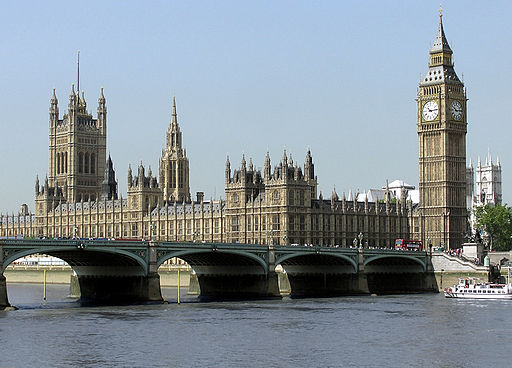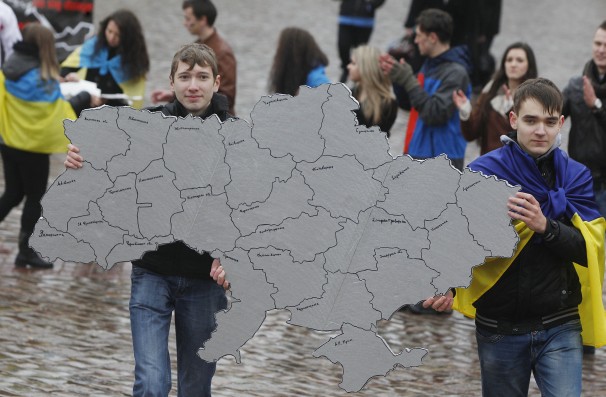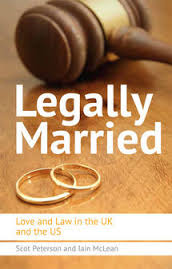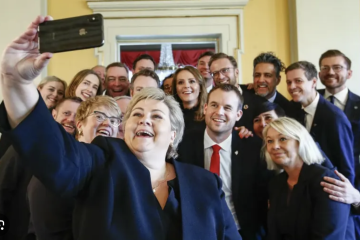The Geopolitics of Culture: Five Substrates
Culture has a salient geopolitical relevance in a world that defines itself by much more than diplomatic exchanges and inter-state relations. This is primarily because of the deeply visceral and emotional connotations associated with identity issues. This has been the case throughout history, as exchanges have taken place between people of different cultures for millennia, but today they are marked by unprecedented intensity and scope of relations. This offers great opportunities on a number of levels but also has the potential to initiate tension or conflict when combined with injustice, inequalities and insecurities.
Cultures are cognitive structures that shape how people view themselves, relate to the world and to each other. As I have explained in my theory “emotional amoral egoism”, human beings are motivated above all else by emotional self-interest. This includes ego, which entails negotiating between inner needs and social context and which requires a sense of belonging and a positive identity. Identity performs its functions by drawing boundaries. If the social context precludes a stable and positive group identity– for instance, because of being negatively defined by others – people are more likely to generate a resistance identity, with boundaries that appear impermeable and safe, or by engaging in identity construction that can lead to xenophobia, rigid ethnocentrism, or forms of ideological radicalism. Because of the emotional nature of identity issues, identity construction has to be authentic to each group itself and will be rejected if defined by others.
Having a positive group identity and self-identity does not have to imply denigrating difference, even if one’s own group is ultimately preferred. I would even argue that cultural and ethnic diversity can be thought of as benefiting humanity’s future, survival, strength and excellence. It promotes what I call cultural vigor similar to the way in which molecular and genetic diversity promotes “hybrid vigor” in nature and thus strength, resilience and a higher potential for a problem-free future. However, in order to yield such productive results, cultures and sub-cultures need to evolve in a non-exclusive manner in a context of transcultural security.

The Future of the Union: Stick or twist?
I want to consider the constitutional implications for the United Kingdom following September’s referendum on Scottish Independence.
If Scotland votes ‘No’
The constitutional consequences are easier to see in the case of a `No’ vote in September. Scotland is then almost certain to be offered more devolution, since all three major UK parties have promised further devolution of taxation powers. That, however, could further unbalance its position in a United Kingdom based on asymmetrical devolution. It is possible that the English Question would be resurrected, and that the Union would come under threat, not from Scotland but from England. England of course is by far the largest and most populous part of the United Kingdom, but the only part of the United Kingdom without a Parliament or assembly of her own. It is therefore the anomaly in the devolution settlement. But her reliability has perhaps been taken for granted, and English nationalism has not, until recently been a political force of any moment. Part of the reason for this no doubt is that, with a characteristic lack of logic, many in England have failed to recognise the distinction between being English and being British, treating the two as interchangeable. This may now be changing as a result of devolution and of euroscepticism, stronger in England than in other parts of the country. Perhaps UKIP is best understood as an English nationalist party, the English equivalent to the SNP. It favours an English parliament.

Constitutional entrenchment in England and the UK
Frequently people think that there are only two ways address flexibility in a constitution: to legally entrench an entire document and to protect it with strong judicial oversight, or to have a political constitution and a sovereign parliament, which, in the words of A.V. Dicey, ‘has … the right to make or unmake any law whatever….’ One aspect of this sovereignty is that parliament cannot bind itself: ‘That Parliaments have more than once intended and endeavoured to pass Acts which should tie the hands of their successors is certain, but the endeavour has always ended in failure.’
Parliament has regularly used language limiting its future options. The Bill of Rights (1688) says that the rights declared there ‘shall be declared, enacted, and established by Authority of this present Parliament, and shall stand, remain, and be the Law of this Realm for ever’. More recently, Parliament promised in the European Union Act 2011 to hold a referendum on any law that increased the competencies of the EU and put in place mechanics for holding itself accountable through judicial review. Are these attempts really as pointless as Dicey claims?

In case Scotland votes no, how should we regulate future independence referendums?
In a few months time Scotland will vote on independence. In my last post on the topic I discussed some of the consequences of a yes vote: the problems that would be raised around the currency, Scotland’s membership of the EU, and, more generally, the difficulties presented by the tight time-fame set by the Scottish Government for negotiation. That post should have given wavering ‘yes’ voters pause for thought; the path to independence is harder and riskier than the Scottish Government’s optimistic White Paper claims. In this post I will discuss one of the consequences of a no vote: its implications for subsequent independence referendums. This post should, perhaps, cause wavering ‘no’ voters to reflect. The independence referendum is, or should be, a once in a generation chance to leave the Union. It would be a mistake to assume that a second referendum will be held any time soon.
There are problems with constitutionalising a right to secession. In a classic article, written as the states of Eastern Europe were recasting their constitutional orders in the early 1990s, Cass Sunstein argued that constitutions should not normally incorporate a right to secede. Sunstein argued that such rights inhibited the creation of a united, effective, state. The constitutional possibility of secession might encourage regions to consider independence on a regular basis, and, on the other side of the equation, the remainder of the state will be aware of secession as an ever-present possibility. As Sunstein argues, this may inhibit long-term planning: why should the state engage in projects that principally benefit the region, knowing that the region might leave at anytime? And when the project benefits the whole state, but requires regional cooperation, how can the state be sure of this support? More darkly, Sunstein warns there is a risk of blackmail. The region can use a threat of secession to put unfair pressure on the remainder of the state. Finally, as Sunstein points out – and as we have reason to know all too well – questions of secession tend to stir emotions more deeply than other political questions. The intemperate character of debate around the issue can, in itself, harm the capacity of the state to act as a coherent unit.

Building a federal Ukraine?
The idea of a remaking of Ukraine’s constitutional order along federal lines is beginning to gain traction. On March 18, Ukrainian Prime Minister Arseniy Yatsenyuk reached out to Russophones in the eastern and southern regions, announcing that “new measures linked to decentralization of power will be reflected in a new constitution.” Senior U.S. administration officials have encouraged the Ukrainian leadership to consider constitutional reform along federal lines.
On March 17, the Russian Foreign Ministry proposed the establishment of an international “support group” to manage the crisis. The list of items that Russia wants to be the basis for negotiation in Ukraine includes a new federal structure for Ukraine and the recognition of Russian as a second language.
Until recently the federal idea was an anathema among the greater part of Ukraine’s political elite. As a constitutional form it was largely rejected in the 1990s, partly as a negative reaction to the experience of Soviet federalism, and partly from fear of its centrifugal potential for splitting the country along ethnolinguistic fault lines.

Cloaks of Invisibility: The latest frontier in military technology
Fiction and reality have meshed to incredible extents in the past decades, and it is no longer a surprise to see sci-fi-inspired inventions used in everyday life. The military field has been no exception and is now at the cusp of groundbreaking innovations that could change war-making to its core.
The next frontier in defense technology is so-called “stealth” technologies, in which the U.S. military has already invested huge funds. New research is opening up the prospect of achieving something close to invisibility on the battlefield, a breakthrough likened to Harry Potter`s famous invisibility cloak. While most stealth technologies are designated to elude enemy radars, new invisibility technologies could conceal objects in real time, not just from radar but from the naked eye.
The science of invisibility took off in the mid 2000s. This research has mostly involved the use of metamaterials, which are extremely thin composites that bend electromagnetic waves in a way that negatively refracts lights. Cloaking mechanisms use metamaterials to route light waves around an object and create the sensation of looking through the object.

Same-sex marriage and the law: a Q&A with Oxford’s Iain McLean and Scot Peterson
I recently sat down with Dr Iain McLean and Dr Scot Peterson to discuss their new book, Legally Married: Love and Law in the UK and the US, which discusses the issues of same-sex marriage in both countries.
I found your book very interesting and though it addressed a very topical issue whilst providing a wealth of historical information and context. Could I start by asking what you think is driving the apparently accelerating legalisation of same-sex marriage worldwide?
Iain McLean: Which is the chicken and which is the egg? In North America, Latin America, and west/central Europe, social attitudes are changing further and faster than on any other moral issue that surveys have ever tracked. And politicians are responding. So are courts. Although judges like to believe that they are above politics, they would think hard about handing down constitutional interpretations that put them wildly at variance with public opinion.
There is a possible ratchet effect too. The US Supreme Court’s decision in Windsor v. US, in June 2013, holding that denial of federal tax benefits to same-sex widow Edith Windsor, which she would have received if her spouse had been male, was unconstitutional, has speeded up the process of legalising same-sex marriage in New Jersey, and may do so in other US states as well.

The Putin-Khodorkovsky dichotomy: The media got it all wrong
It looked like a scene from a Cold War spy thriller. 24 hours after his release, Oligrach Mikhail Khodorkovsky, who ended a 10-year sentence, appeared in Berlin wearing a heavy duty Russian air-force jacket and smiling broadly. It was, however, the Russian President Vladimir Putin’s announcement about Khodorkovsky’s early release which caught a lot of people by surprise. A global media spectacle followed.Journalists and commentators scrutinised whether Putin’s decision symbolised a political strength or weakness, whether Khodorkovsky admitted his guilt, and whether he is going to become a political opposition figure or remain in exile. Media outlets appeared to be outpacing one another in applying dramatic labels to the momentous event.
A reflection on the media coverage along with the analysis of Khodorkovsky’s interviews of the past few days, however, paints a more ambivalent picture and suggests that the dichotomies and sensational labels applied are often not fitting. The “surprise” label attributed to Putin’s decision, the “disappointment” characterising public reaction at Khodorkovky’s apparent disinterest in re-entering Russian politics, and the “Dissident versus Despot” dichotomy applied to the Putin-Khodorkovky’s relationship, bear closer scrutiny. A closer look at his latest interviews highlights Khodorkovsky’s complex personality and well-formed, but somewhat, contradictory political views.









